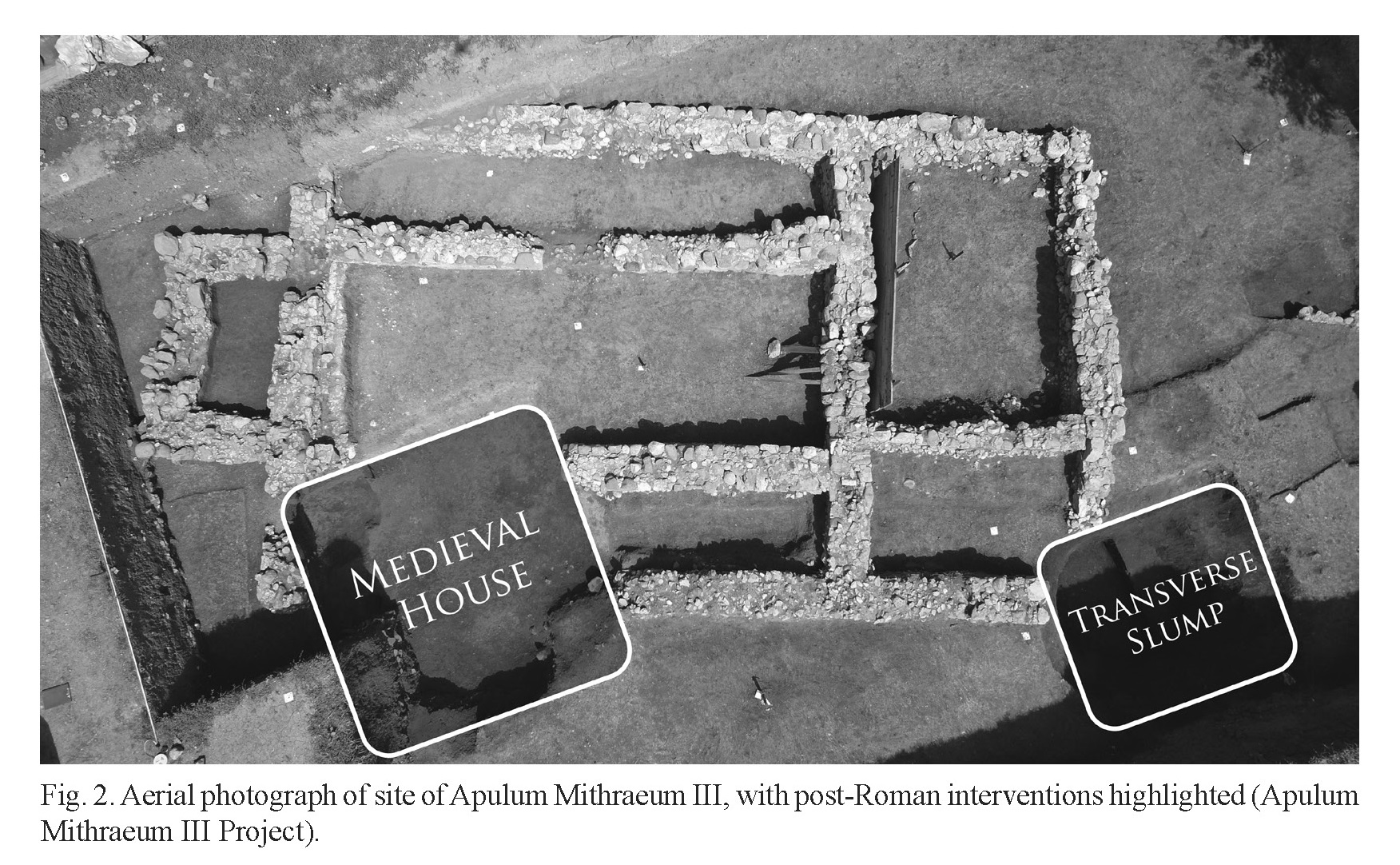
CIMRM Supplement - Mithraeum III. Apulum/Alba Iulia, Romania
See also: Mithraeum III; Altar A; Statue Base B - Transitus; Statue Base C - Cautopates; Statue Base D - Cautes?; Fragment of inscription E;
From 2013 to 2016, the Apulum Mithraeum III Project documented the remains uncovered in 2008 and continued excavation of the building and its surroundings. It sat on rubble foundations that rose about 1 Roman foot (28 cm) above ground-level as a dwarf wall to protect a timber-and-mud superstructure. It was oriented E–W, with the main entrance set at the NE corner where a doorsill was robbed out. That entrance led into a small antechamber, subdivided by a wall on a lighter foundation on the S side probably to create a small storage space, akin to those at other mithraea.30 From the antechamber, one stepped down into a nave flanked by two raised benches whose floor level can be reconstructed just below the outside ground level. The walls of the benches use larger stones than do the outer walls, creating a sense of descent into a rocky cave. At the W end of the nave, a mortar step, once paved with robbed stone or ceramic slabs (imprints survive), leads up to a recessed niche. That niche presumably displayed a scene of Mithras stabbing the bull, probably in relief given the fragment of a relief plaque discovered nearby. The mithraeum was laid out with a pair of benches 7.5 m long accommodating 20-25 reclining initiates, similar to other Mithraea across the empire. The building was designed and scaled to suggest that its anticipated usage was for a community of ‘standard’ size.1
The closing of a rubbish pit immediately predating construction of the mithraeum provides a terminus post quem for its building around 150–170 AD, making it one of the earliest attestations of Mithraism in Dacia.2
Apulum was the base of the legionary fortress of the Legio XIII Gemina, commanded in the early 180's by Marcus Valerius Maximianus, connected to other Mithraic temples elsewhere. A 'cannabae' grew up outside the walls, which eventually became a 'municipium', and a separate Roman colony was established to the south. There may have been three Mithraea in the northern site.3
External links.
- Princeton University site.
- Misterele templului zeului Mithras, descoperit la Alba iulia, April 2018. Article in Romanian on the discoveries at Alba Iulia.
| 1 | Matthew M. McCarty &c, "The archaeology of ancient cult: from foundation deposits to religion in Roman Mithraism", In: Journal of Roman Archaeology 32 (2019), 279-312. This contains detailed discussion of the micro-finds and what can be learned from them. |
| 2 | Egri &c, "A new Mithraic community at Apulum (Alba Iulia, Romania)" in: Zeitschrift für Papyrologie und Epigraphik, 205 (2018) 268–276, esp. p. 270. |
| 3 | C.M.Daniels, "The Roman army and the spread of Mithraism", in John Hinnells (ed), Mithraic Studies I, p.254. |
| Tweet |




